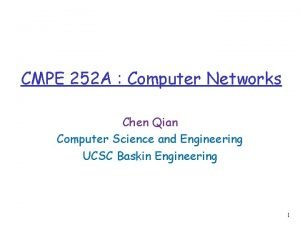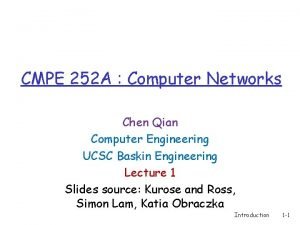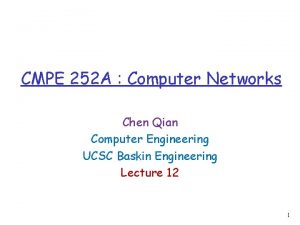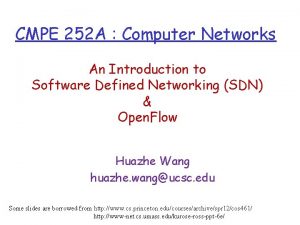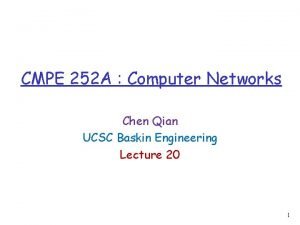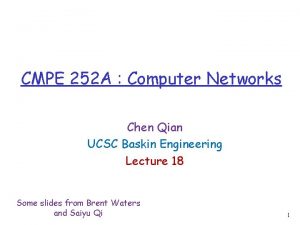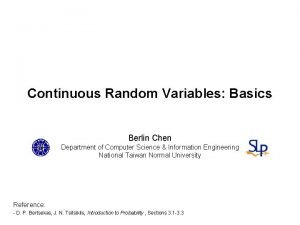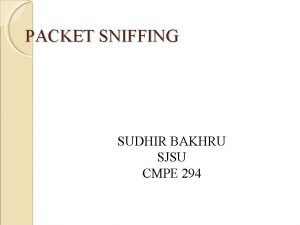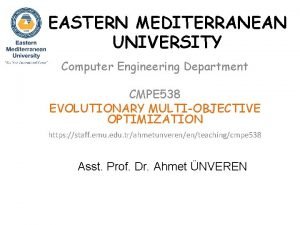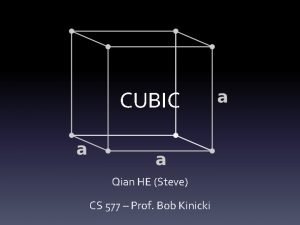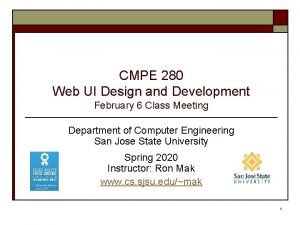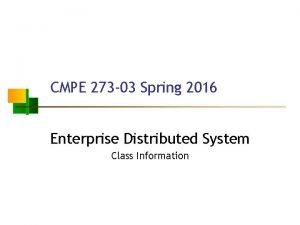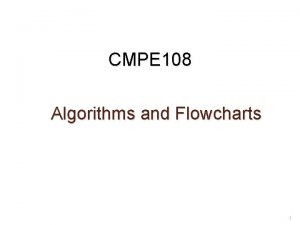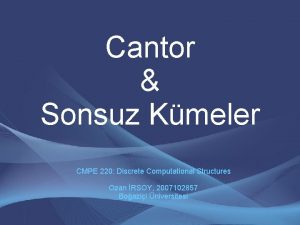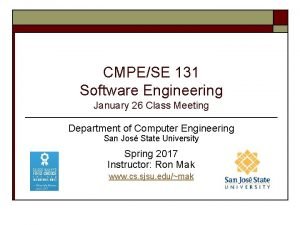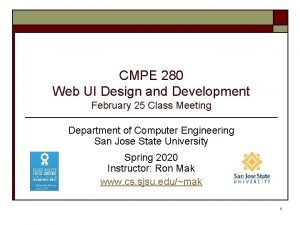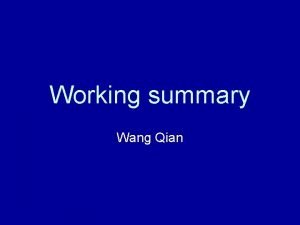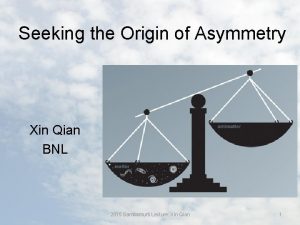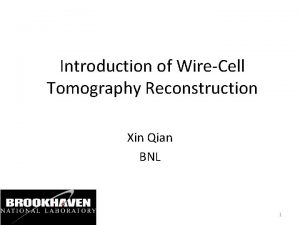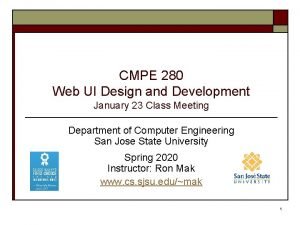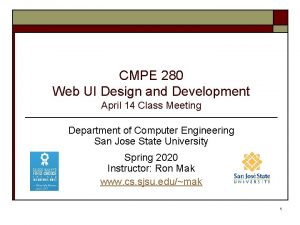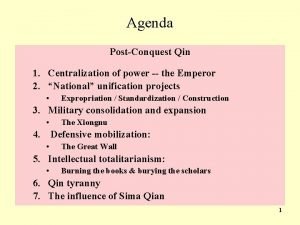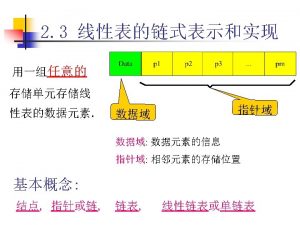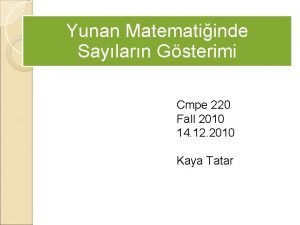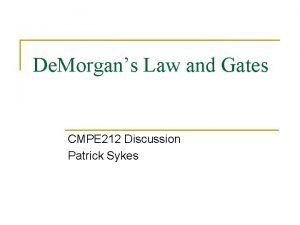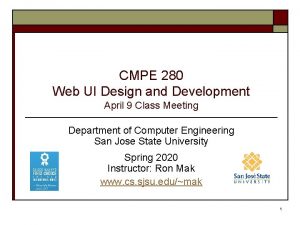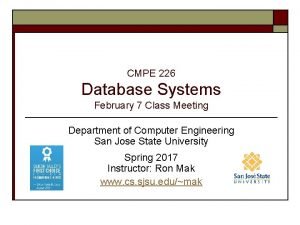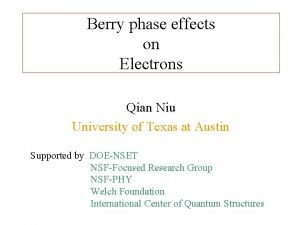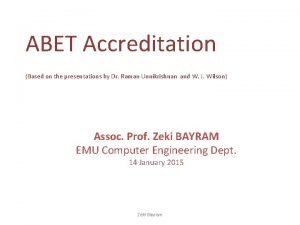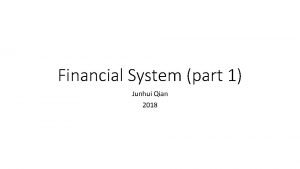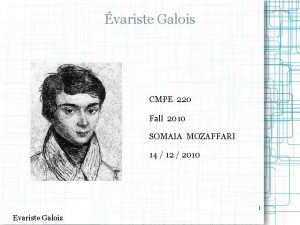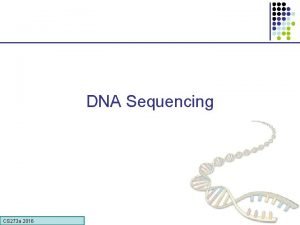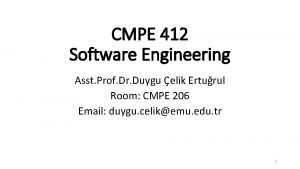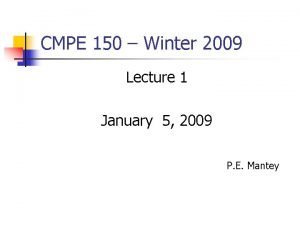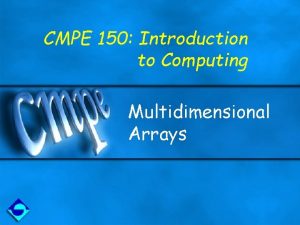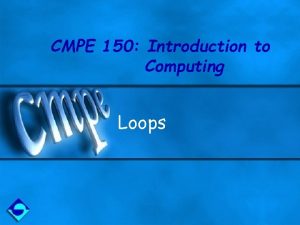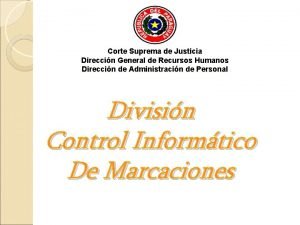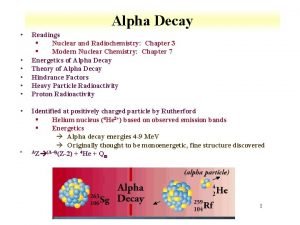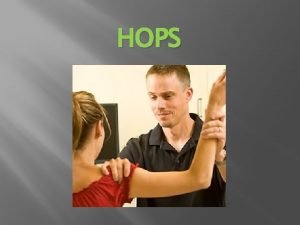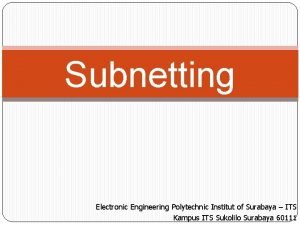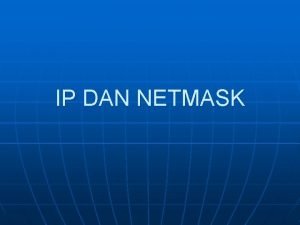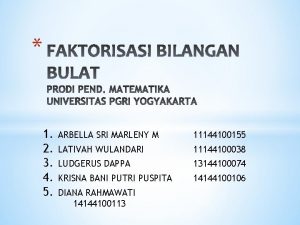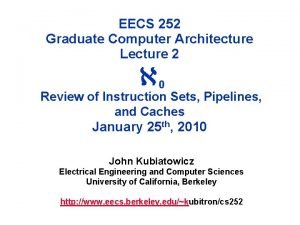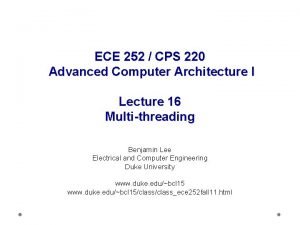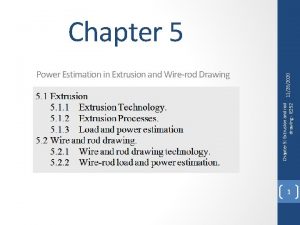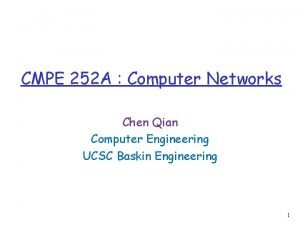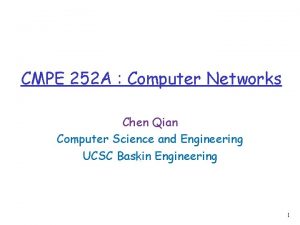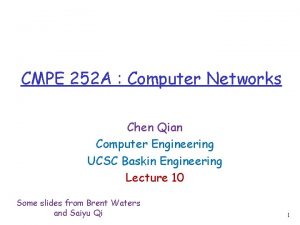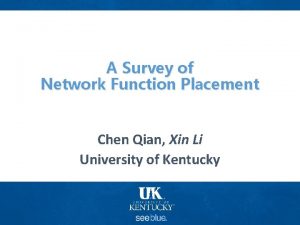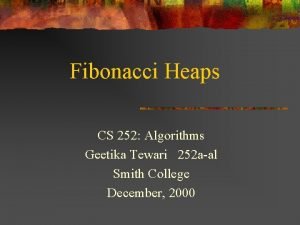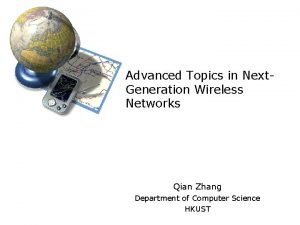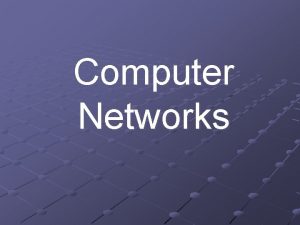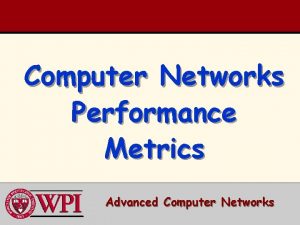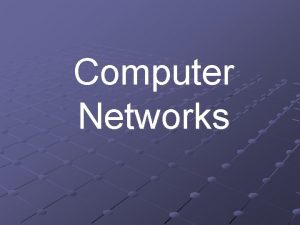CMPE 252 A Computer Networks Chen Qian Computer



















![Planarized Graphs Relative Neighborhood Graph (RNG) [Toussaint, ’ 80] and Gabriel Graph (GG) [Gabriel, Planarized Graphs Relative Neighborhood Graph (RNG) [Toussaint, ’ 80] and Gabriel Graph (GG) [Gabriel,](https://slidetodoc.com/presentation_image_h2/982d1019131e06b31f113bd3a1211530/image-20.jpg)








![Evaluation: Simulations • ns-2 with wireless extensions [Broch et al. , ’ 98]; full Evaluation: Simulations • ns-2 with wireless extensions [Broch et al. , ’ 98]; full](https://slidetodoc.com/presentation_image_h2/982d1019131e06b31f113bd3a1211530/image-29.jpg)





































- Slides: 66

CMPE 252 A : Computer Networks Chen Qian Computer Engineering UCSC Baskin Engineering Lecture 8 Slides revised from Brad Karp and Ben Leong 1

Motivation: Wireless Sensor networks 2

Motivation: Sensornets • Many sensors, widely dispersed • Sensor: radio, CPU, storage, battery • Multiple wireless hops, forwarding sensorto-sensor to a base station • Typical protocol: 802. 15. 4 Zig. Bee What communication primitives will thousand- or million-node sensornets need? 3

“Scalability” in Sensor Networks • Resource constraints drive metrics • State per node: minimize • Energy consumed: minimize • Bandwidth consumed: minimize • System scale in nodes: maximize • Operation success rate: maximize 4

Outline • Motivation • Context • Algorithm – Greedy forwarding – Graph planarization – Perimeter forwarding • Evaluation in simulation • Footnotes – Open questions – Foibles of simulation 5

The Routing Problem • Each router has unique ID • Packets stamped with destination node ID • Router must choose next hop for received packet • Routers communicate to accumulate state for use in forwarding decisions • Routes change with topology • Evaluation metrics: – – Routing protocol message cost Data delivery success rate Route length (hops) Per-router state (important to scalability) D ? ? S 6

Why Are Topologies Dynamic? • Node failure – Battery depletion – Hardware malfunction – Physical damage (harsh environment) • Link failure – Changing RF interference sources – Mobile obstacles change multi-path fading • Node mobility – In-range neighbor set constantly changing – Extreme case for routing scalability – Not commonly envisioned for sensor networks 7

Routing: Past Approaches, Scaling • Wired, Intra-domain Internet routing: – – Link-state and Distance-vector: shortest paths in hops LS: push full topology map to all routers, O(L) state DV: push distances across network diameter, O(N) state Each link change must be communicated to all routers, or loops/disconnection result [Zaumen, Garcia-Luna, ’ 91] • Dynamic Source Routing (DSR), ad hoc routing: – Flood queries on-demand to learn source routes – Cache replies 8

Scaling Routing (cont’d) • Dominant factors in cost of DV, LS, DSR: – rate of change of topology (bandwidth) – number of routers in routing domain (b/w, state) routing scales because of IP • Today: Scaling Internet strategies: prefix aggregation; not easily – Hierarchy: at AS boundaries (BGP) orapplicable on finer scalein sensornets (OSPF) • Goal: reduce number of routers in routing domain Assumption: address aggregationstate Can • we achieve per-node – Caching: storeofsource independent N? routes overheard (DSR) Goal: limit propagation of future queries Can • we reduce bandwidth spent • Assumption: source route remains fixed while cached communicating topology changes? 9

Greedy Perimeter Stateless Routing (GPSR) Central idea: Machines can know their geographic locations. Route using geography. • Packet destination field: location of destination • Nodes all know own positions, e. g. , – by GPS (outdoors) – by surveyed position (for non-mobile nodes) – by short-range localization (indoors, [AT&T Camb, 1997], [Priyantha et al. , 2000]) – &c. • Assume an efficient node location registration/lookup system (e. g. , GLS [Li et al. , 2000]) to support host-centric addressing 10

Assumptions • Bi-directional radio links (unidirectional links may be blacklisted) • Network nodes placed roughly in a plane • Radio propagation in free space; distance from transmitter determines signal strength at receiver • Fixed, uniform radio transmitter power 11

Greedy Forwarding • Nodes learn immediate neighbors’ positions from beaconing/piggybacking on data packets • Neighbor Locally optimal, next hop choice: must begreedy strictly closer to avoid loops – Neighbor geographically nearest destination D x y 12

In Praise of Geography • Self-describing • As node density increases, shortest path tends toward Euclidean straight line between source and destination • Node’s state concerns only one-hop neighbors: – Low per-node state: O(density) – Low routing protocol overhead: state pushed only one hop 13

Greedy Forwarding Failure Greedy forwarding not always possible! Consider: D v circumnavigate voids z(local How can we minimum)? …based only on one-hop neighborhood? void y w x 14

Greedy routing: problems Not shortest-path Require location information Greedytoforwarding fails at a No fully distributed solution an arbitrary minimum connectedlocal graph Lots of assumptions sender destination local minimum 15

Node Density and Voids more prevalent in sparser topologies 16

Void Traversal: The Right-hand Rule Well-known graph traversal: right-hand rule Requires only neighbors’ positions z y x 17

Right hand rule and traverse outside of the local minimum destination sender local minimum 18

Planar vs. Non-planar Graphs On graphs with edges that cross (non-planar graphs), right-hand rule may not tour enclosed face boundary How to remove crossing edges without partitioning graph? And using only single-hop neighbors’ positions? 19
![Planarized Graphs Relative Neighborhood Graph RNG Toussaint 80 and Gabriel Graph GG Gabriel Planarized Graphs Relative Neighborhood Graph (RNG) [Toussaint, ’ 80] and Gabriel Graph (GG) [Gabriel,](https://slidetodoc.com/presentation_image_h2/982d1019131e06b31f113bd3a1211530/image-20.jpg)
Planarized Graphs Relative Neighborhood Graph (RNG) [Toussaint, ’ 80] and Gabriel Graph (GG) [Gabriel, ’ 69]: long-known planar graphs Assume edge exists between any pair of nodes separated by less than threshold distance (i. e. , nominal radio range) RNG and GG can be constructed from only neighbors’ positions, and can be shown not to partition network! Euclidean MST (so connected) RNG GG w w u v Delaunay Triangulation (so planar) ? ? RNG GG 20

Planarized Graphs: Example 200 nodes, placed uniformly at random on 2000 -by-2000 -meter region; 250 -meter radio range Full Graph GG Subgraph RNG Subgraph 21

Full Greedy Perimeter Stateless Routing • All packets begin in greedy mode • Greedy mode uses full graph • Upon greedy failure, node marks its location in packet, marks packet in perimeter mode • Perimeter mode packets follow simple planar graph traversal: – Forward along successively closer faces by right-hand rule, until reaching destination – Packets return to greedy mode upon reaching node closer to destination than perimeter mode entry point 22

Perimeter Mode Forwarding Example D Small question: how to determine whether twox line segments intersect? • Traverse face closer to D along x. D by right-hand rule, until crossing x. D • Repeat with next-closer face, &c. 23

24

25

One more question: how to compute the orientation of three points? 26

27

Outline • Motivation • Context • Algorithm – Greedy forwarding – Graph planarization – Perimeter forwarding • Evaluation in simulation • Footnotes – Open questions – Foibles of simulation 28
![Evaluation Simulations ns2 with wireless extensions Broch et al 98 full Evaluation: Simulations • ns-2 with wireless extensions [Broch et al. , ’ 98]; full](https://slidetodoc.com/presentation_image_h2/982d1019131e06b31f113bd3a1211530/image-29.jpg)
Evaluation: Simulations • ns-2 with wireless extensions [Broch et al. , ’ 98]; full 802. 11 MAC, free space physical propagation • Topologies: Nodes 50 200 50 Region Density 1500 m x 300 m 1 node / 9000 m 2 3000 m x 600 m 1 node / 9000 m 2 1340 m x 1340 m 1 node / 35912 m 2 • 30 2 -Kbps CBR flows; 64 -byte data packets • Random Waypoint Mobility in [1, 20 m/s]; Pause Time [0, 30, 60, 120 s]; 1. 5 s GPSR beacons 29

Packet Delivery Success Rate (50, 200; Dense) 30

Routing Protocol Overhead (50, 200; Dense) 31

Path Length (50; Dense) 32

Path Length (200; Dense) Why does DSR find shorter paths more of the time when mobility rate increases? 33

State Size (200; Dense) How would you expect GPSR’s state size to change the number of nodes in the network increases? Why does DSR hold state for more nodes than there are in the network? 34

Outline • Motivation • Context • Algorithm – Greedy forwarding – Graph planarization – Perimeter forwarding • Evaluation in simulation • Footnotes – Open questions – Foibles of simulation 35

Recap: Scalability via Geography with GPSR Key scalability properties: • Small state per router: O(D), not O(N) or O(L) as for shortest-path routing, where D = density (neighbors), N = total nodes, L = total links • Low routing protocol overhead: each node merely single-hop broadcasts own position periodically • Approximates shortest paths on dense networks • Delivers more packets successfully on dynamic topologies than shortest-paths routing protocols 36

Geographic Routing without Planarization Ben Leong, Barbara Liskov & Robert Morris MIT CSAIL NSDI 2006 37

Problem of GPSR v v It assumes a unit disk model: All nodes have identical communication range R. Every pair of nodes within distance R must be connected. Not true in real wireless networks. Why? Communication range of a node is not (far from!) a disk! § Antenna has its direction. § Obstacles somewhere in signal propagation paths. § Some unreasonable reasons (seriously!) v Without unit disk model, there is no GG nor RNG. No planarization! 38

CLDP (Sensys 2005) v v More complicated Planarization algorithms. More communication cost 39

GDSTR (this work) v v v Greedy Distributed Spanning Tree Routing (GDSTR) Route on a spanning tree Use convex hulls to “summarize” the area covered by a subtree – convex hulls tells us what points are possibly reachable – reduces the subtree that must be traversed (smaller search problem) 40

41

42

43

44

45

46

47

48

49

50

51

Small question: how to compute a convex hull given a set of points? 52

53

54

Time complexity to compute a convex hull? v O(nlogn) 55

56

57

58

Routing algorithm v Try greedy forwarding v v • Local minimum: – choose tree – record start node – traverse subtree v • If possible, revert to greedy forwarding v • Back to start node: packet undeliverable v v 59

Simulation Results v v v v v Measured 2 routing metrics: – Path Stretch – Hop Stretch • Topologies – range of network densities (average node degree) – larger networks up to 5, 000 nodes • low/high density • low/high obstacle density 60

Simulation Results v v v v • Compare with – GPSR (Karp, 2001), – GOAFR+ (Kuhn, 2003) and – GPVFR (Leong et al. , 2005) under CLDP planarization (Kim et al. , 2005) • Measured costs and compared with CLDP: – storage – bandwidth 61

Hop Stretch 62

63

Messages for Startup 64

Summary v v v v Sparse networks – GDSTR chooses correct forwarding direction more often than face routing • Moderately dense networks – Faces are small, forwarding direction is inconsequential – Trees do not “approximate” small voids well • Ultra-dense networks – Greedy forwarding works all the time! 65

Next problems v GDSTR is not fully distributed, there is still a centralized structure. § Some nodes need large storage cost for routing state v How to use geographic in 3 d? § More in my paper MDT (paper 6). 66
 Cmpe 252
Cmpe 252 Qian chen ucsc
Qian chen ucsc Cmpe 252
Cmpe 252 Cmpe 252
Cmpe 252 Qian chen ucsc
Qian chen ucsc Qian chen ucsc
Qian chen ucsc Chen chen berlin
Chen chen berlin Virtual circuit switching example
Virtual circuit switching example Backbone networks in computer networks
Backbone networks in computer networks Cmpe 294 sjsu
Cmpe 294 sjsu Chuang qian ming yue guang li bai
Chuang qian ming yue guang li bai After many years (duo nian yi hou)
After many years (duo nian yi hou) Emu computer engineering
Emu computer engineering Steve qian
Steve qian Cmpe 280
Cmpe 280 Cmpe 273
Cmpe 273 Cmpe flowchart
Cmpe flowchart Cmpe 220
Cmpe 220 Xiaomin qian
Xiaomin qian Harvard catalyst biostatistics
Harvard catalyst biostatistics Open minded
Open minded Sjsu cmpe 131
Sjsu cmpe 131 Cmpe 280
Cmpe 280 Bill gates
Bill gates Wang qian av
Wang qian av Qian janice wang
Qian janice wang Statdx
Statdx Xin qian bnl
Xin qian bnl Wirecell
Wirecell Ron mak sjsu
Ron mak sjsu Cmpe 280
Cmpe 280 Sima qian
Sima qian Zhao qian malaysia
Zhao qian malaysia Yunan harfleri
Yunan harfleri Cmpe 212
Cmpe 212 Cmpe 280
Cmpe 280 Cmpe226
Cmpe226 Cmpe150
Cmpe150 Qian niu
Qian niu Qian niu
Qian niu Winnie qian
Winnie qian Dr abet
Dr abet Macroeconomics
Macroeconomics Dr alpagut
Dr alpagut Junhui qian
Junhui qian Qian li xue
Qian li xue Cmpe 220
Cmpe 220 Qian hongyan
Qian hongyan Cmpe 273
Cmpe 273 Duygu çelik ertuğrul
Duygu çelik ertuğrul Cmpe 150
Cmpe 150 Cmpe 150
Cmpe 150 Cmpe 150
Cmpe 150 Acordada 252/02
Acordada 252/02 Cf-252 decay scheme
Cf-252 decay scheme Simplifying radicals
Simplifying radicals Bone marrow hops 252
Bone marrow hops 252 Binary to hexadecimal practice
Binary to hexadecimal practice 252 nomreli mekteb
252 nomreli mekteb Its
Its Skema ip address
Skema ip address 252 basics
252 basics Fpb dari 198
Fpb dari 198 252
252 Cps 220
Cps 220 Drawing ie
Drawing ie Mcd
Mcd
